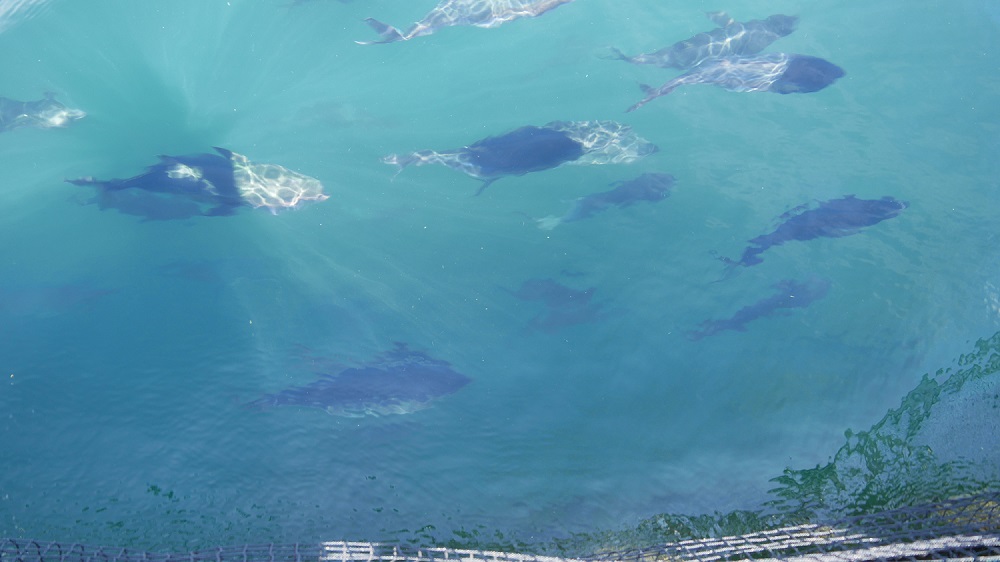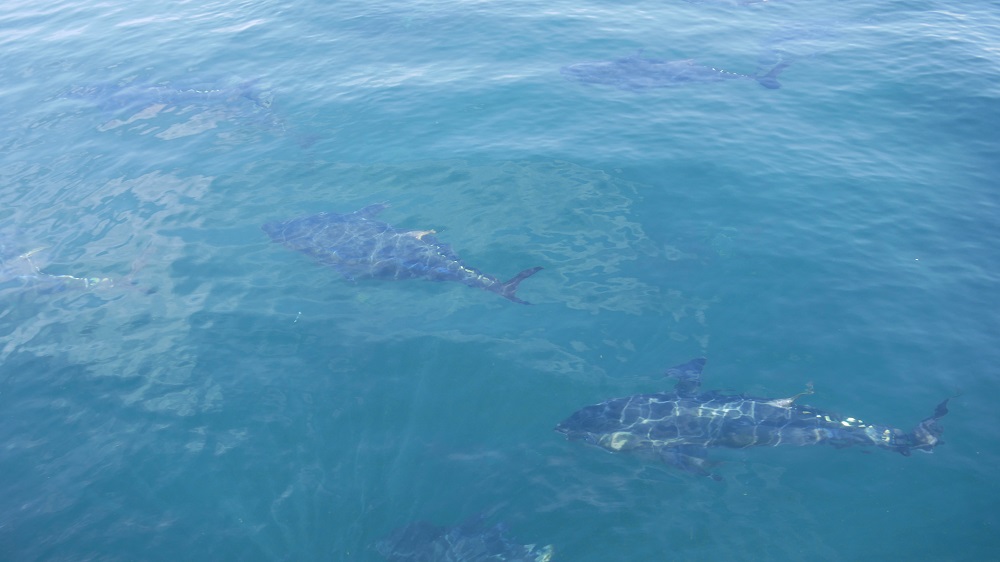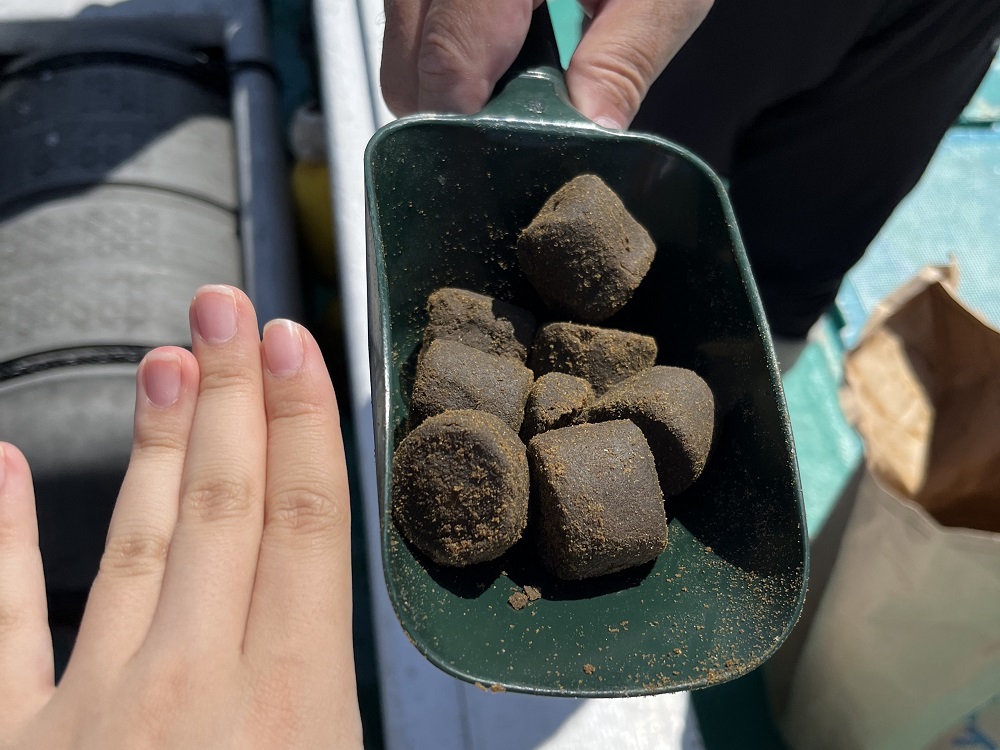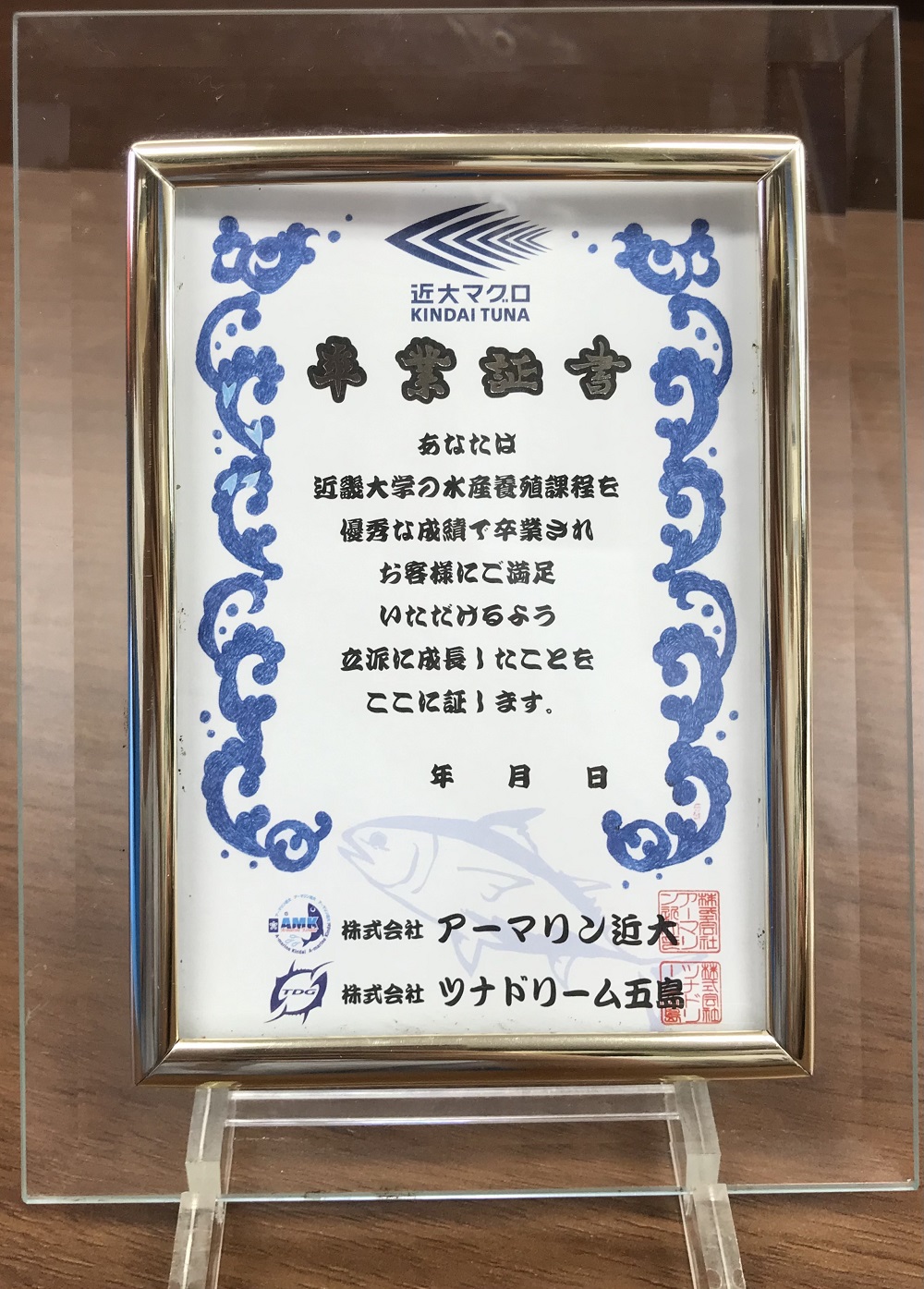Site Vist to Kindai University
As a part of this "School-of-Tuna" project, we visited the Oshima Station, Aquaculture Research Institute, Kindai University, in which
Complete Cultivation
The complete aquaculture refers to aquaculture that semi-permanently sustains the cycle of collecting eggs taken from farmed adults, hatching them, and raising them to adulthood.
(See ![]() For sustanability >
For sustanability > ![]() Aquaculture
Aquaculture

|
Becouse the complete aquaculture does not utilize natural marine resources, it enable to bring tuna to our table with be recovering natural tuna stocks. |
History of Complete aquaculture of tuna project in Kindai University

|
The bluefin tuna aquaculture project was an unprecedented and difficult challenge. |
Location of Oshima Station
The Oshima Station is located at the southern tip of the Kii Peninsula. The fish tanks at the Oshima Station are located in the inner bay, and the road above the sea acts as a breakwater. Therefore, fish cages in the bay are less likely to be damaged by typhoons. The high water temperature and good water quality make it suitable for tuna farming.
Aquaculture cage offshore
|
|
 |
Scheme of Complete aquaculture of tuna
capturing eggs in aquaculture cage
Tuna spawn when the water temperature approaches 25°C. At the Oshima Station, the spawning season is from June to August, a little later than for natural tuna, which spawn in April and May.
The fertilized eggs float to the surface of the sea in aquacultuer cage and are collected with a net by hand.
Hatching eggs and growing upto fry
The production of seedlings from hatched larvae (after hatching until fins are complete) to fly (about 20 days after hatching) is
The process is one of the most difficult, as there are several problems and difficult points, such as the occurrence of cannibalism around 20 days after hatching, when the fish change from hatchlings to fry.
Tranfer to aquaculture cage offshore
This is the process of fly cultured in the land-based tank to transfer into aquaculture cage offshore. This is conducted around July, one month after hatching.
Through this process, 30% of fry die from accidental ingestion, stress, and other factors.
Growing fry to adult fishes in aquaculture cage offshore
This is the process of fly cultured in the land-based tank to transfer into aquaculture cage offshore. This is conducted around July, one month after hatching.
Through this process, 30% of fry die from accidental ingestion, stress, and other factors.
Growing fry to adult fishes in aquaculture cage offshore
|
The right figure shows specimens of bluefin tuna preserved at Oshima station. Photos in the figure represent respectively specimens of eggs, fry, youngling about 10 cm in length, and youngling 51.6 cm in length. The youngling of rightmost photo is 200 days old and weight 2,484 g in weight. |
 |
Feed
For fry and younglings
Feed for fry are Brachionus plicatilis (zooplankton), Artemia, and hatched larvae of parrot fishes, depend on their growth.
Feed for adult fishes
1 year old (taken offshore last July)Body size is 3 kg in weight, 50 cm in length (as same as new born baby of human). About 1,000 fishes present in one cage |
Four years oldBody sise is 70~80 kg in weigth and 1.7 m in length (as same as adult human male) Fishes of this size are shipped to restrants and other customers. |
|

|

|
|

|

|
ITuna eat about 3% of their body weight in a day. Therefore, tuna farming requires
Kindai University originally used frozen horse mackerels and sardines as bait, but now feeds tuna with formula feed, except for fry, due to problems with freshness management, food poisoning, and water pollution from leftover feed.
Shipping
Complete farm-raised bluefin tuna are shipped 3 to 4 years after birth. When complete farm-raised bluefin tuna are shipped from Kindai University, they receive a 'diploma'. |
 |
What percentage of hatched eggs become shipped tuna?
About 10% of fry hatched from eggs are released offshore. Even after releasing offshore, 30% of them die from accidental ingestion, stress, and other factors.
Complete aquaculture of fish other than tuna
Complete aquaculture of Japanese eels has been achieved, but it is still difficult to produce large amounts of them through complete aquaculture. Also, complete aquaculture of conger eels has not yet been achieved.
Furthermore, complete aquaculture has been achieved for yellowtail and amberjack, but the aquaculture industry uses mostly wild juveniles, and the aquaculture has not been replaced by complete aquaculture.
Kindai University tuna has a whole-body toro!?
|
Kindai University's farmed tuna has |

|
Message from Professor
We received comments from Dr. Yasuo Agawa, who guided us around the Oshima Station, Aquaculture Research Institute, about the future of the sustainable ocean.

|
Fisheries resources are limited, so it is necessary to use them carefully and without waste, and it is also important to increase them through proper aquaculture. Although aquaculture of fish that are difficult to raise is becoming more successful, we cannot be optimistic about the state of the oceans in recent years. |
Tuna Quiz (7)
Which prefecture has designated tuna as the prefecture's fish?
Shizuoka Prefecture
Incorrect!Although it is not designated as a prefectural fish, the catch of tuna is the largest in Japan.
Aomori Prefecture
Incorrect!Although not designated as a prefectural fish, Oma tuna is famous.
Wakayama Prefecture
Correct!Wakayama Prefecture, where the Oshima Proving Ground is located, has designated tuna as a prefectural fish.
It seems that it was decided by a prefectural people's voting in 1987.
Reference
https://www.flku.jp/english/
(translated title: World's First! Complete cultivation of tuna)
Publisher:Kagakudojin
Auther:Hiroki Hayashi
(in Japanese)
(translated title: The ultimate bluefin tuna farming story)
Publisher:Nikkei BP Marketing, Inc.
Auther:Hidemi Kumai
(in Japanese)
Publisher:Nikkan Kogyo Shimbun
Edited:Aquaculture Research Institute, Kindai University
(in Japanese)
![]() Home
© 2022-2023 マグロの学校/School-of-Tuna All rights reserved.
Home
© 2022-2023 マグロの学校/School-of-Tuna All rights reserved.